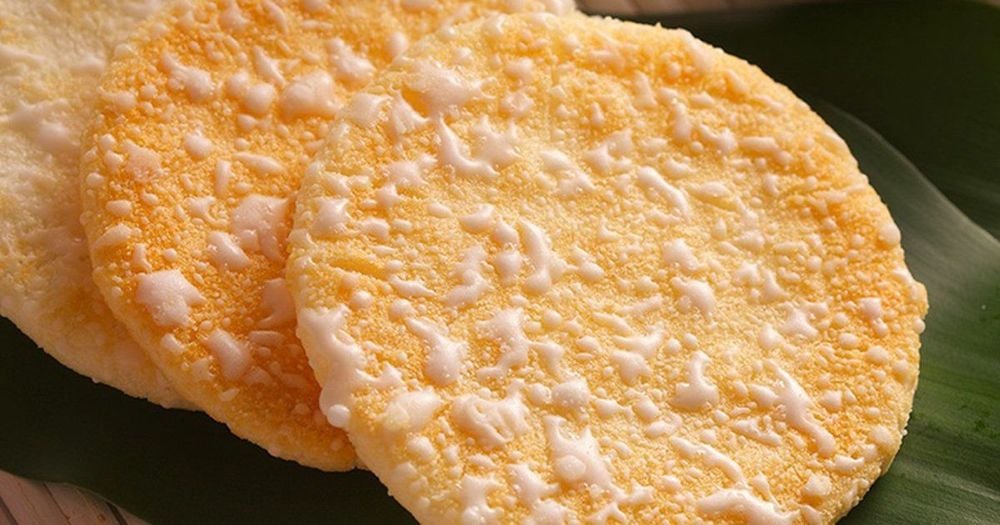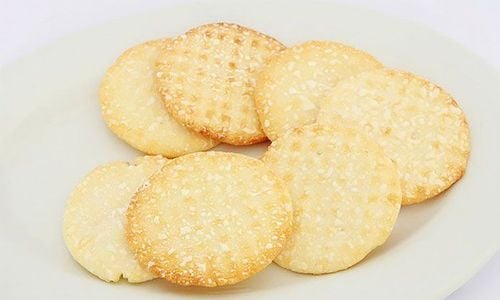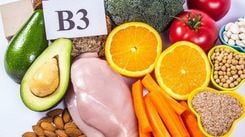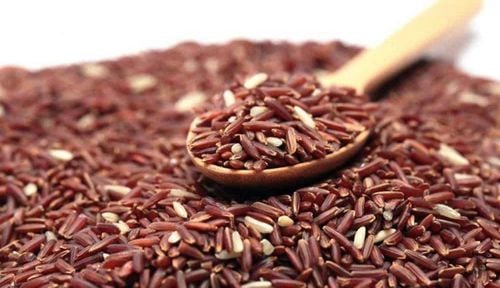Rice cakes are known as a healthy and popular snack for all ages. However, the health benefits of this type of cake are still not clearly provided by the evidence. Rice cakes have low-calorie content and are gluten-free. This article examines the nutrition and health effects of rice cakes.
1. Rice Cakes
Rice cakes are considered a popular snack with low-fat content, but you might wonder if you should eat them and if rice cakes are good for you. Rice cakes are made from main ingredients including puffed rice pressed together into cakes. They are often eaten as a low-calorie substitute for bread and crackers.
While many flavors are available, the most basic type is salted. Rice cakes have relatively low nutritional content.
One rice cake made from brown rice provides:
Calories: 35 grams
Carbs: 7.3 grams
Fiber: 0.4 grams
Protein: 0.7 grams
Fat: 0.3 grams
Niacin: 4% of the recommended daily intake (RDI)
Magnesium: 3% RDI
Phosphorus: 3% RDI
Manganese: 17% RDI
Additionally, the nutritional composition of rice cakes also contains minimal amounts of vitamin E, riboflavin, vitamin B6, pantothenic acid, iron, potassium, zinc, copper, and selenium. The sodium content of rice cakes will depend on whether they are salted.
Moreover, the process of washing rice - as used to make rice cakes - has been shown to reduce the antioxidant content of rice.
However, remember that this nutritional information is only for plain rice cakes. Flavored rice cakes often contain added sugar and other ingredients to create their distinctive flavors.

2. Rice Cakes Are Low in Calories
One rice cake (9 grams) contains about 35 calories, mostly from carbs. So, do rice cakes make you fat? Most people eat rice cakes instead of bread or crackers, both of which can contain more calories. For example, eating one slice (28 grams) of whole-grain bread has more calories than a rice cake, with whole-grain bread containing 69 calories. Therefore, replacing two slices of bread with two rice cakes will save you 68 calories. These figures might convince you: Do rice cakes help with weight loss?
However, eating rice cakes more often means you will also miss out on 3 grams of fiber and various other nutrients. Additionally, two rice cakes only provide about 18 grams of food, less than 56 grams for two slices of bread. Essentially, the calorie difference might just be because you are eating less food.
In fact, by weight, rice cakes have more calories - about 210 calories per 56 grams, compared to 138 calories for whole-grain bread.
Similarly, 28 grams of whole-grain crackers have about 124 calories. If you replace them with an equivalent amount of rice cakes - three rice cakes, or 27 grams - you will consume 105 calories, saving 19 calories.
You might feel like you are eating more because the air in rice cakes makes you feel full, but the calorie savings when switching from bread or crackers to rice cakes are minimal and might leave you lacking fiber and other important nutrients.
3. Health Effects of Rice Cakes
Rice cakes can have both positive and negative effects on health. Here are some examples:
3.1. Some Rice Cakes Contain Whole Grains
Rice cakes are often made from whole-grain brown rice. A diet high in whole grains has been shown to reduce the risk of chronic diseases.
A study of 360,000 people found that those who consumed the most whole grains - such as brown rice - had a 17% lower risk of death from all causes compared to those who ate the least whole grains.
Additionally, consuming whole grains is associated with a reduced risk of type 2 diabetes and obesity.
However, not all rice cakes on the market use whole grains, so when choosing rice cakes, look for whole-grain brown rice on the label to ensure you are buying the right type.
3.2. Most Rice Cakes Are Gluten-Free
Rice cakes are made from rice, so they do not contain gluten. Some types include wheat, kamut, or other gluten-containing grains, so remember to read the label carefully if you have celiac disease or gluten intolerance.
Additionally, rice cakes are widely available, making them a convenient gluten-free option at home. If you want to choose gluten-free snacks, rice cakes can be a good option as they are found in all major grocery stores.
3.3. Can Increase Blood Sugar Levels
Rice cakes can raise your blood sugar levels. The glycemic index (GI) is a measure of how quickly a food raises your blood sugar levels. Puffed rice cakes have a GI of over 70, considered high. While some reports suggest rice cakes can have a GI as high as 91, no scientific evidence supports this number.

However, they are mostly carbs with very little protein and fiber to slow the impact of these carbs on your blood sugar levels.
Using rice cakes as your entire diet without healthy food replacements can increase your blood sugar and insulin levels. To reduce the impact of rice cakes on your blood sugar levels, combine them with protein-rich foods such as meat, cheese, hummus, or nut butter. You can also add fiber in the form of fruits or vegetables.
4. How to Add Rice Cakes to Your Diet
Rice cakes are low in calories, and their fiber and protein content is similarly low. Most of the calories come from carbs. Combining rice cakes with protein and fiber can balance their potential impact on your blood sugar levels. You can try pairing rice cakes with:
- Hummus, cucumber, and sliced tomatoes
- Cream cheese, smoked salmon, and sliced cucumber
- Peanut butter and sliced banana
- Almond butter and sliced strawberries
- Guacamole and sliced cheese
- Sliced turkey and tomatoes
- White beans and kale
- Tuna salad and celery
- Mashed avocado and a boiled egg
- Tomatoes, basil, and mozzarella cheese
Rice cakes might have fewer calories than bread, but they also have less fiber and other important nutrients. Whole-grain brown rice cakes might offer some health benefits, but this gluten-free food can still raise your blood sugar levels. To balance the effects of rice cakes on your body, it is best to combine them with protein and fiber-rich foods. Rice cakes can be a popular diet food, but they will not provide real benefits if you do not enjoy them.
To arrange an appointment, please call HOTLINE or make your reservation directly HERE. You may also download the MyVinmec app to schedule appointments faster and manage your reservations more conveniently.
Reference source: healthline.com









